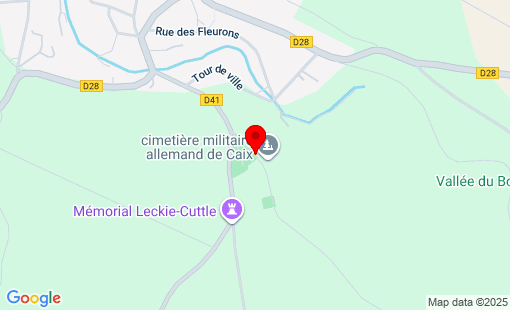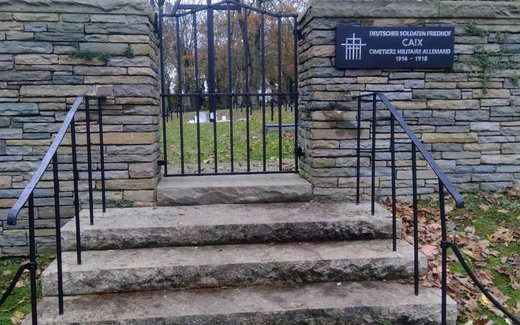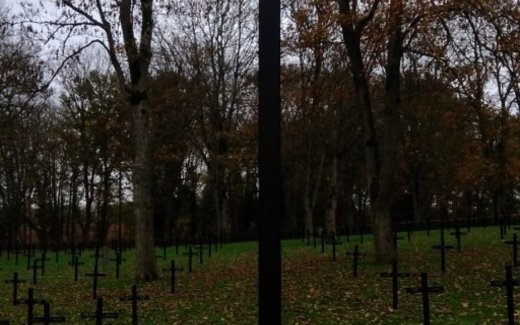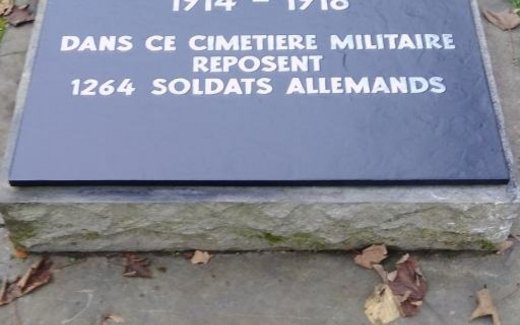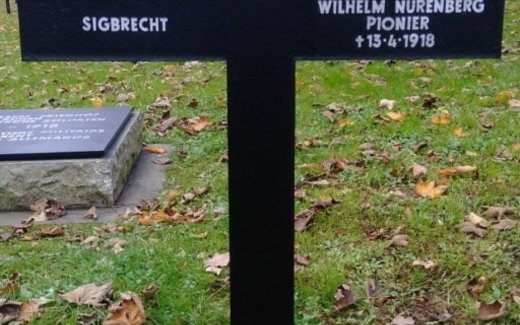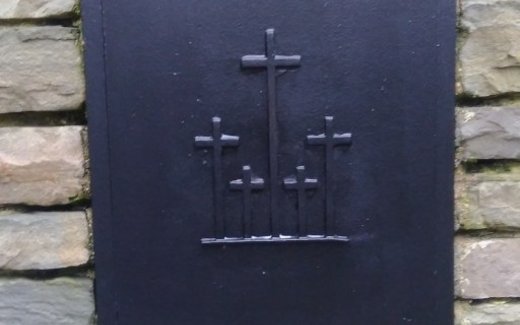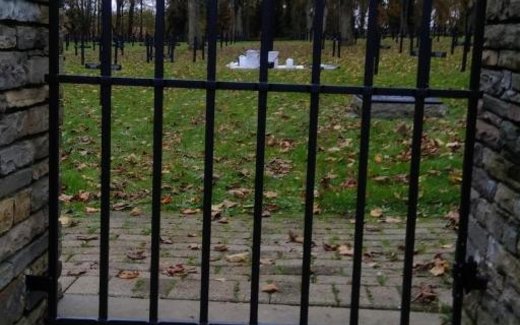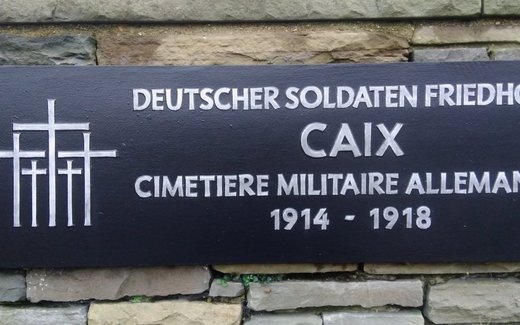This war cemetery is home to 1,264 German war dead from the First World War.
World War I.
Département Somme
The Caix German military cemetery was established at the end of March 1918 by the German
By the German troops during their spring offensive - the "Great Battle of France
Battle of France" - via Montdidier and Moreuil until shortly before Amiens
had advanced. Until the recapture of the area around Caix by the
Allies in August 1918, there were constant burials by the troops. Approx.
30 of those buried here died as prisoners of war between 1918 and 1919. From 1922
the French military authorities expanded the cemetery through extensive
Additional burials from 34 other municipal areas. Many of the dead were only found when
Were only found when the battlefield was cleared and were also brought from distances of up to 30
km to Caix to find their final resting place here. Those resting here
Resting here belonged to the Prussian Guard as well as units that had left their
Home garrisons in Bavaria, Hesse, Württemberg, Westphalia, Saxony, Hanover,
Oldenburg, East Frisia, Posen, Schleswig-Holstein, Mecklenburg and the Rhineland
Rhineland.
Repair work between the wars
The first work to improve the condition of the cemetery was carried out by the
Volksbund Deutsche Kriegsgräberfürsorge e.V. (German War Graves Commission) from 1927 on the basis of an
Agreement with the responsible French military authorities. An
Entrance gate was created, the graves were planted with uniform vegetation
And numerous trees and bushes were planted over the entire area
planted throughout the site. However, the problem of permanently marking the graves remained
Graves due to a lack of foreign currency and the outbreak of the Second World War in 1939
still unresolved at first.
Final design
Following the conclusion of the Franco-German War Graves Agreement of July 19, 1966, the
1966, the Volksbund Deutsche Kriegsgräberfürsorge e.V. was able to begin the
the final design of the German military cemeteries in France from the
Of the First World War in France.
in 1973, the provisional wooden grave markers were replaced with metal ones
Metal ones with the names and dates of the dead cast in relief.
The German Armed Forces took over the transportation of the concrete foundations required to erect the metal crosses
foundations required to erect the metal crosses, most of which were laid at the graves by participants in
Volksbund youth camps at the graves. Six of the 1,264 buried in individual graves
Resting in individual graves remained unknown.
The two graves of fallen Jews were given a stele instead of a cross for religious reasons
A natural stone stele instead of a cross for religious reasons.
The Hebrew characters read:
1. (above) "Here rests buried ... ."
2. (below) "May his soul be interwoven into the circle of the living."
A fundamental landscape gardening overhaul was carried out, which focused
essentially extended to the greening of the graves and the planting of new trees and bushes
and bushes. In addition, a high cross made of forged steel was erected as a
central marker.
France
Caix
Total Occupation: 1.264 fatalities
Total Occupation: 1.264 fatalities
Contact
Contact
D41- Ausfahrt aus der Stadt, Richtung Le Quesnel
Caix
France
